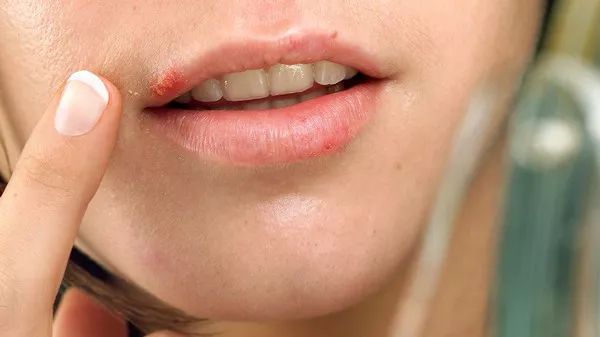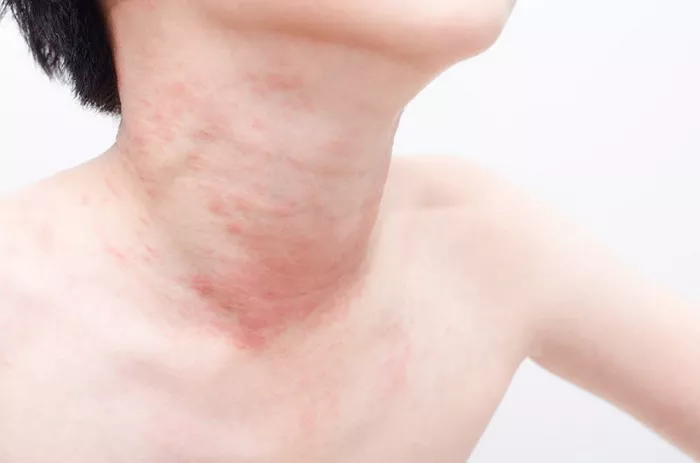Hives, medically known as urticaria, are raised, itchy welts that can appear on the skin. While they can occur anywhere on the body, hives on the lips can be particularly uncomfortable and alarming due to their visibility and potential for interference with daily activities such as eating and talking. Understanding the underlying causes of hives on the lips is crucial for effective management and prevention. In this article, we delve into the various factors that can trigger hives specifically on the lips, from allergic reactions to underlying health conditions.
Allergic Reactions
One of the most common causes of hives on the lips is allergic reactions. When an individual comes into contact with a substance to which they are allergic, their immune system reacts by releasing histamines and other chemicals, leading to the characteristic symptoms of hives. Common allergens that can trigger hives on the lips include:
1. Food Allergies: Certain foods, such as nuts, shellfish, eggs, and dairy products, are known to cause allergic reactions in susceptible individuals. Ingesting these allergens can lead to hives on the lips, along with other symptoms such as itching, swelling, and difficulty breathing.
2. Medications: Some medications, including antibiotics, nonsteroidal anti-inflammatory drugs (NSAIDs), and certain pain relievers, can trigger allergic reactions that manifest as hives on the lips. It is essential to consult a healthcare professional if you suspect that a medication is causing your hives.
3. Cosmetics and Personal Care Products: Ingredients found in cosmetics, lip balms, toothpaste, and other personal care products can sometimes trigger allergic reactions, leading to hives on the lips. Common culprits include fragrances, preservatives, and dyes.
Insect Bites and Stings
Insect bites and stings can also cause hives on the lips, particularly if the individual is allergic to the venom of the insect. Insect allergies can range from mild to severe, with symptoms ranging from localized swelling and itching to life-threatening anaphylaxis. Common insects that can trigger hives on the lips include bees, wasps, hornets, and ants. If you suspect an insect bite or sting is causing your hives, seek medical attention immediately, especially if you have a history of severe allergic reactions.
Environmental Factors
Certain environmental factors can contribute to the development of hives on the lips, particularly in individuals with sensitive skin or underlying allergies. These factors include:
1. Pollen: Pollen from trees, grasses, and weeds can trigger allergic reactions in some people, leading to hives on the lips and other areas of the body. This type of allergic reaction is more common during the spring and fall when pollen levels are high.
2. Pet Dander: Pet dander, which consists of tiny flecks of skin shed by animals such as cats, dogs, and rodents, can trigger allergic reactions in susceptible individuals. Exposure to pet dander can lead to hives on the lips, along with other symptoms such as sneezing, itching, and congestion.
3. Mold: Mold spores present in damp or humid environments can trigger allergic reactions in some individuals, leading to hives on the lips and other skin irritations. Common sources of mold include damp basements, bathrooms, and kitchens.
Underlying Health Conditions
In some cases, hives on the lips may be a symptom of an underlying health condition. These conditions may include:
1. Autoimmune Disorders: Autoimmune disorders such as lupus, rheumatoid arthritis, and thyroid disease can cause hives on the lips and other areas of the body. In these conditions, the immune system mistakenly attacks healthy tissues, leading to inflammation and other symptoms.
2. Viral Infections: Certain viral infections, such as herpes simplex virus (HSV) and Epstein-Barr virus (EBV), can cause hives on the lips as part of their symptomatology. These hives are often accompanied by other symptoms such as fever, fatigue, and sore throat.
3. Chronic Illnesses: Chronic illnesses such as liver disease, kidney disease, and certain cancers can cause hives on the lips as a secondary symptom. In these cases, hives may be indicative of underlying systemic inflammation or dysfunction.
Treatment and Management
The treatment and management of hives on the lips depend on the underlying cause and severity of the symptoms. In many cases, over-the-counter antihistamines such as diphenhydramine (Benadryl) or loratadine (Claritin) can help alleviate itching and reduce inflammation associated with hives. Avoiding known triggers, such as certain foods, medications, or environmental allergens, is also essential for preventing recurrent outbreaks of hives on the lips.
In cases where hives are severe or persistent, it is crucial to seek medical attention from a healthcare professional. A doctor may recommend prescription-strength antihistamines, corticosteroids, or other medications to help manage symptoms and prevent complications. In severe cases of allergic reactions, particularly those involving insect bites or stings, emergency medical treatment may be necessary to prevent anaphylaxis and other serious complications.
Prevention
While it may not always be possible to prevent hives on the lips entirely, there are steps individuals can take to reduce their risk of experiencing outbreaks. These include:
1. Identifying and Avoiding Triggers: Keep a diary of symptoms and potential triggers to help identify foods, medications, or environmental factors that may be contributing to hives on the lips. Once identified, take steps to avoid or minimize exposure to these triggers.
2. Maintaining Good Skin Hygiene: Practice good skin hygiene by washing the lips and surrounding areas regularly with a mild soap or cleanser. Avoid using harsh or irritating products that may exacerbate hives or cause further inflammation.
3. Seeking Medical Advice: If you experience recurrent or severe outbreaks of hives on the lips, seek medical advice from a healthcare professional. A doctor can help identify underlying causes and develop an appropriate treatment plan to manage symptoms effectively.
Conclusion
In conclusion, hives on the lips can be uncomfortable and distressing, but understanding the underlying causes can help individuals manage symptoms effectively and prevent future outbreaks. Whether due to allergic reactions, environmental factors, or underlying health conditions, identifying triggers and seeking appropriate medical treatment are essential steps in managing hives on the lips and improving overall quality of life.


























